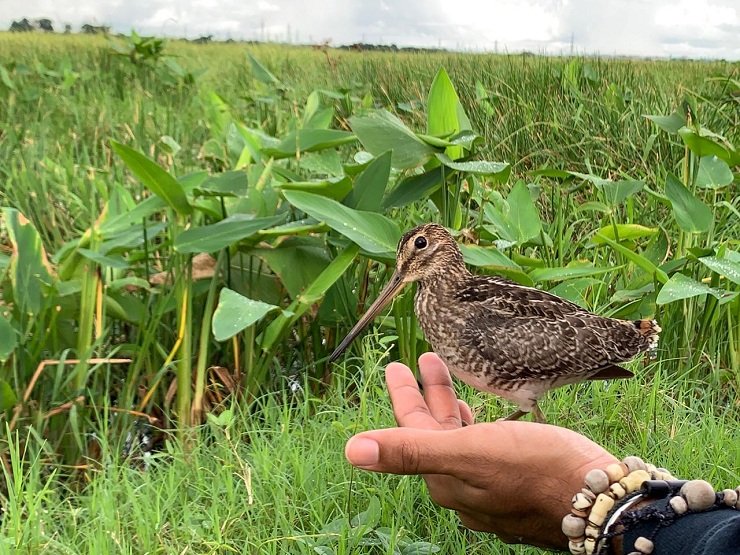
For those of us who have been bestowed with the good fortune of seeing a snipe, we understand the gravity of the blessing. Any snipe is a good snipe, they say. Out of the approximately 26 species of snipes worldwide, two have been recorded on Trinidad. Only one has been seen on Tobago.
The trouble begins with the recognition of the fact that both species of snipe were formerly part of a single species – Common Snipe (Gallinago gallinago). Field guides listed two subspecies – delicata (which would eventually become the highly migratory Wilson’s Snipe) and paraguaiae (breeding resident South American Snipe) – which were extremely difficult to discern from one another in the field. I’m not saying that no-one cared to separate them, but let’s just say that life must have been much simpler if one could see a snipe – any snipe – and enter “Common Snipe” with confidence in their notes.
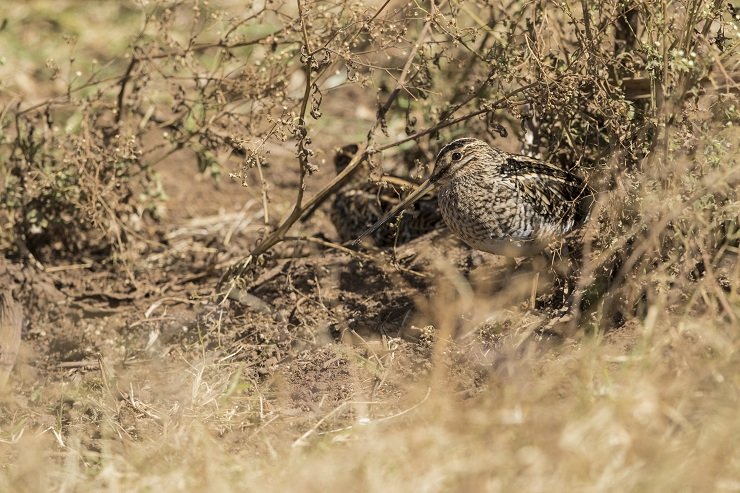
A pair of Common Snipes (yes there are two!) in Nairobi.
The first snipe I ever saw was on Tobago, a definite Wilson’s Snipe. No South American Snipes have ever been recorded on the island, so no trouble there. In fact, there are no recorded sightings of any snipes on Tobago between May – July. During these months every Wilson’s Snipe would be busy with breeding in northern North America.
On Trinidad it took me some more time until I saw my first snipe. Only then I realized the horrors involved in confidently identifying which species it was. It turned out that time of year played an immeasurable role in species determination. Such was the unlikeliness of a definitive ID. The generally accepted rules were: any snipe found between 1st May and 31st July on Trinidad is definitely a South American Snipe, any snipe found outside of that time period could be either species. Any snipe found nesting would also be South American Snipe. Any snipe on Tobago would be a Wilson’s Snipe.
See, the defining characteristics for either species are quite subtle and unlikely to be observed in the field. Some specimens in the hand also presented difficulties. For many years, even after I joined the Rare Bird Committee, I simply took it for granted that I would have to walk away from some snipe ID questions.
This all changed a few days ago, when I got a call about a distressed bird in someone’s backyard. A rehabber friend of mine sent me a photo of the bird asking for an ID. Lo and behold, it was a snipe. Within a half hour, I had the bird in my hand. I repeat: I had a snipe in the hand.
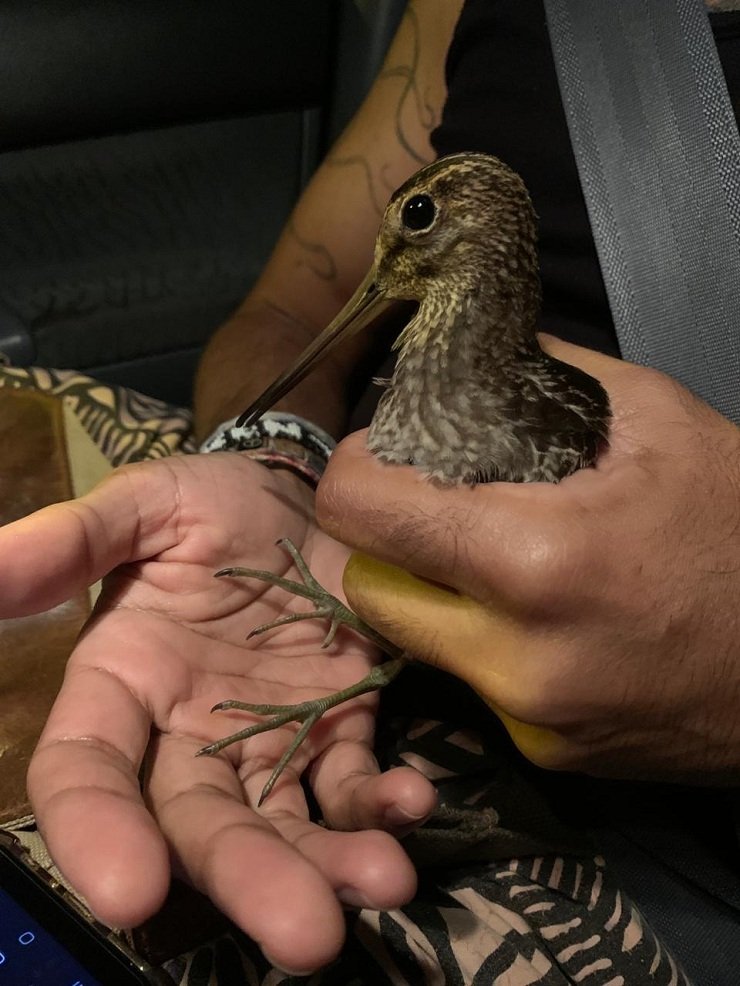
Freshly collected and en route to some R&R
As curious as I was to confidently identify the bird, I still held its welfare above all other things and tried to cause it as little trouble as possible. We delivered the bird to the rehab centre without spreading the tail feathers or inspecting the underwing. At this point I was certain (albeit in an unscientific way) that it was a Wilson’s Snipe – yet I had nothing concrete to carry to my fellow birders. I understood (also unscientifically) that this bird was on its first journey, headed to a nearby wetland and simply did not have the strength to reach its destination.
A few days later, we picked up the little thing to release it, as it was apparently clamoring for freedom. Remaining calm in its cardboard home for much of the journey, I intended to inspect it fully before letting it fly in order to satiate my curiosity and put to rest the unending stream of “what ifs” coursing through my mind. We opted to release it in a more remote location where in our limited wisdom it would have all the habitat it needed. In order to reach this remote location however, we had to pass the original wetland where I had surmised the bird was headed to originally. As we were passing next to this wetland, the bird suddenly began to bang against its box. My wife and I exchanged glances, firstly the din interrupted our conversation but more importantly, we both understood that this bird somehow knew where it was – and that this was where it had to be.
With its now frantic behaviour inside its box, I was convinced that holding the bird was now out of the question, and so went any hopes of nailing a definitive ID. I placed the box on the ground and opened the top. The bird sat for a few seconds, then took flight – back into the car of all places! Immediately I grabbed it and with that, also took the opportunity to get a few crucial ID photos.
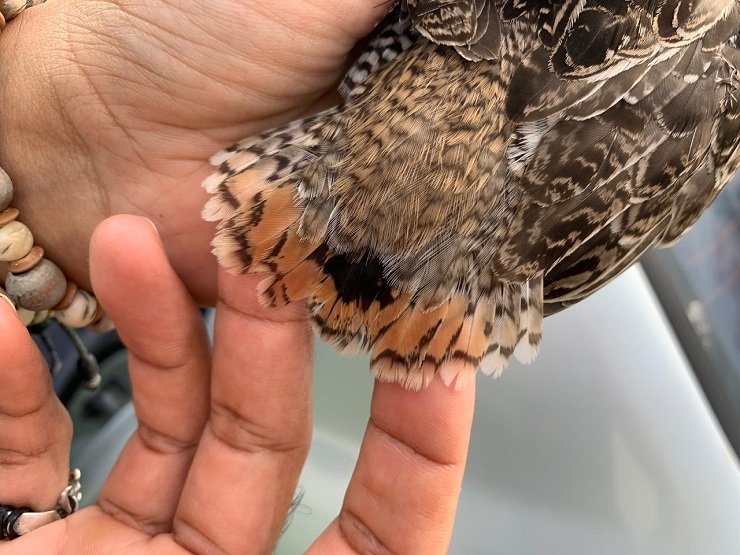
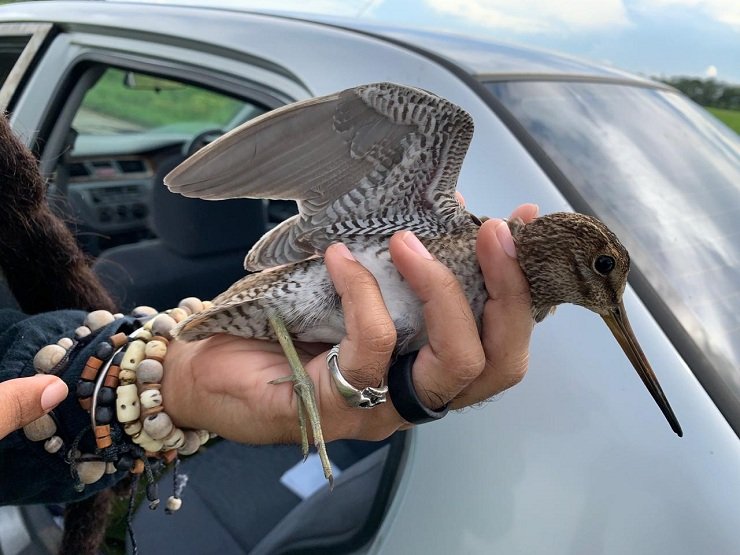
Thankful that after placing the bird’s welfare above all things it eventually decided to let me have the satisfaction of hard evidence, we watched as it rummaged through the reeds of its new habitat. We observed it stand and stare at us for quite some time before slinking away, fully embracing its nature as a snipe – a true creature of eternal mystery.

It toyed with my emotions for many minutes before it eventually flew off. How can one not love that face?
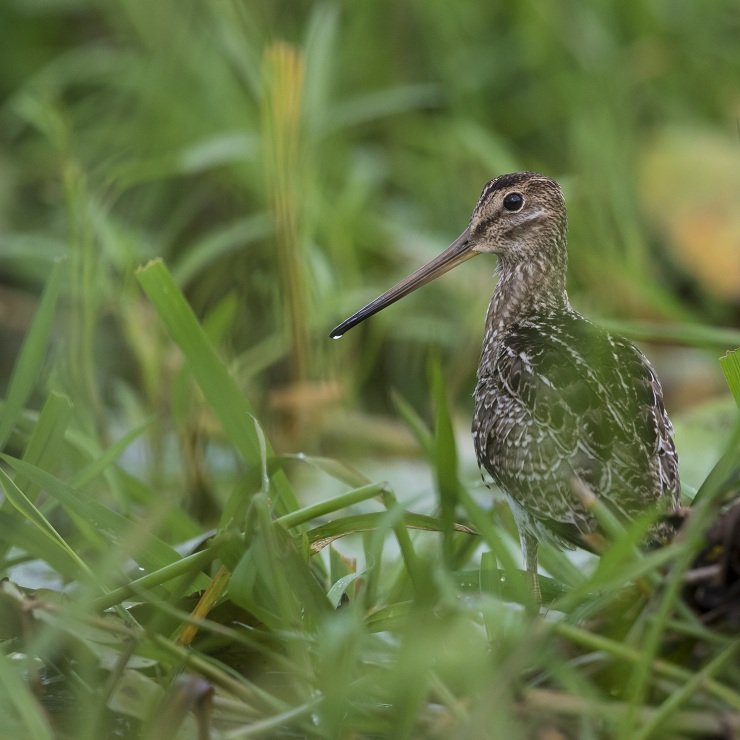
After having a sip of some water, just before disappearing.
It was then time for the final chapter – although in my heart I felt that it was a Wilson’s Snipe – what did the hard evidence say?
The underside of the bird’s wings held all the information – it’s uniform grey/brown on Wilson’s but mixed with white for South American. Furthermore – the axillaries or wing-pit feathers have a particular type of barring that’s almost 50/50 black and white on Wilson’s. On a South American Snipe these feathers would have much more white than black.
But what if the bird never flashes its underwing? This has been the trouble plaguing ornithologists locally for many years. If the bird raises its wings, it’s likely flying – and good luck trying to get a good view of a flying snipe! The key is getting a good look at the back end of the bird. Wilson’s Snipes have much more black on their tertials, as opposed to South American Snipes which have a fairly even barred pattern on the same feathers.
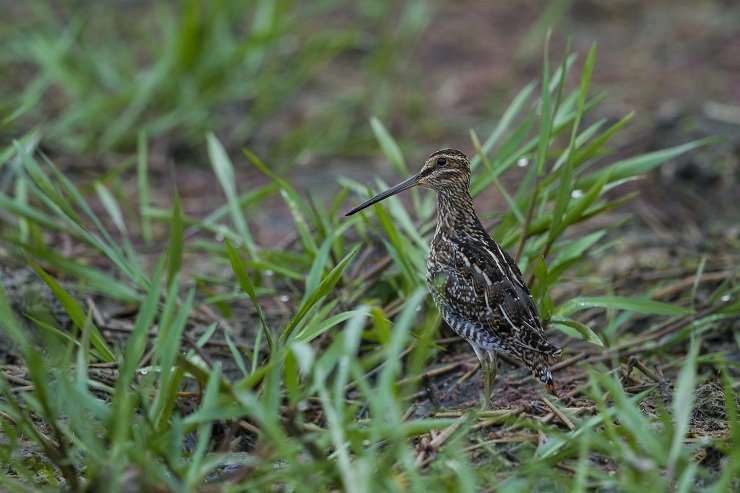
The experience emboldened me to revisit some of my older images, this snipe seen in January 2019 is clearly a Wilson’s Snipe as evidenced by the extensive black on its tertials.
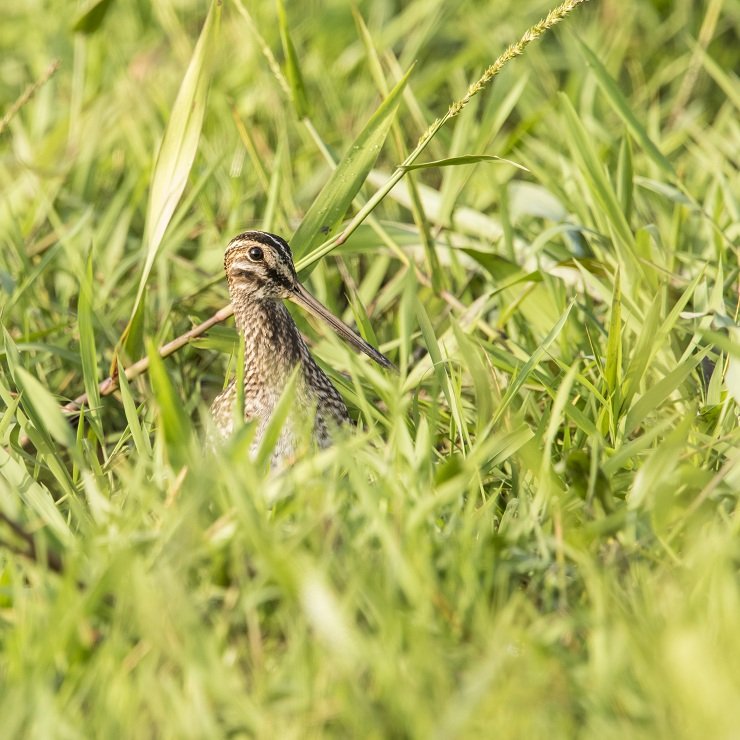
Without the optimal view, some snipes like this one seen in February this year on Trinidad shall remain unidentified, unfortunately.
Their tail patterns differ as well – Wilson’s has a broader, more irregular barred pattern on the outer tail while the South American Snipes’ tails have a narrower, even barring.
It’s by no means easy, but I do feel empowered somewhat by our encounter. I felt a massive sense of relief when the ID of our bird was confirmed as a Wilson’s Snipe.
Complete resolution of the ID process is nowhere near though. I’ve been wondering about considering other factors in identification, such as age or wear and tear of feathers. Still so much more to learn.
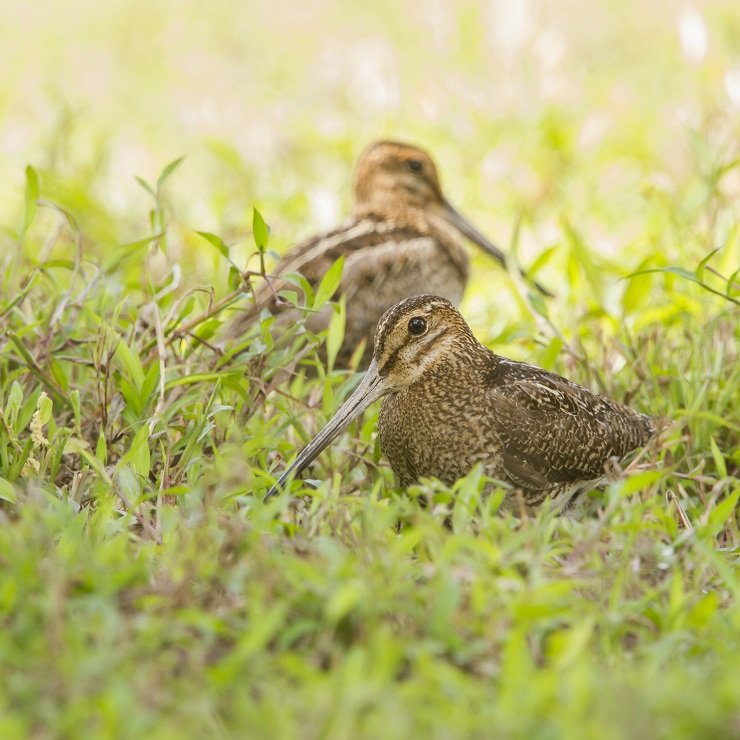
I observed this pair of snipes in August two years ago. Their buff markings and fresh-looking feathers seem to indicate that they are juvenile birds that have not just flown thousands of miles to get to Trinidad. Adult Wilson’s Snipes would migrate first and they tend to sport bright white facial markings. Even without a look at their rear ends I am 95% certain these are South American Snipes. Any thoughts on this assessment would be greatly appreciated!













I loved Farazz”s story about the Snipe. Farazz is very knowledgeable about birds. I am an amature bird watcher. I love birds. Birds are beautiful.
Thank you, Ann. Yes, birds are indeed beautiful and deserve our love.
Nice and informative article Faraaz! An envious experience!
Ha! Thanks, Jerome! Thankfully there was a happy ending to its story.